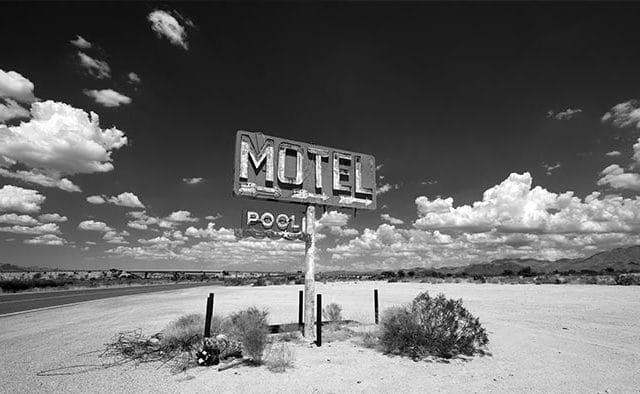Here, we’ll guide you through our planet’s most bizarre and inexplicable sights, all thanks to Google Earth. While many of us use this tool to zoom in to find the fastest route to the nearest coffee shop, it also serves as a gateway to the strange and the surreal. Buckle up as we take a virtual tour to discover 7 of the weirdest places on Google Earth, from natural formations to man-made oddities that boggle the mind
1. The Badlands Guardian: A Geological Marvel

Imagine stumbling across what appears to be an enormous human head wearing an indigenous headdress, all formed naturally by the contours of the Earth. This is the Badlands Guardian in Alberta, Canada, a geological marvel that can only be fully appreciated from above. The ‘Guardian’ isn’t just a testament to the wonders of nature but also a favorite among enthusiasts of aerial photography and geographic anomalies.
This remarkable formation is hardly recognizable from the ground, its lines and curves blending seamlessly into the rugged terrain. Yet, from the skies, the visage emerges as if meticulously sculpted by a playful giant. Its creation, purely by the forces of erosion and the artful placement of natural materials, challenges the imagination and beckons the curious to explore more of Earth’s unscripted artworks.
2. The Potash Ponds: Utah’s Vibrant Water Art

The vivid blue of the Potash Ponds near Moab, Utah, stands in stark contrast to the surrounding arid red rock landscape, creating a man-made spectacle that’s as visually stunning as it is industrially functional. These ponds, used for the evaporation of potash, a type of potassium salt used in fertilizer, are dyed a brilliant blue to aid in the absorption of sunlight, thereby speeding up the evaporation process.
What results is a patchwork of intensely colored ponds that from above appear as a giant, surreal painting. The utilitarian purpose behind such beauty adds a layer of fascination to the aerial observer and speaks to the unexpected intersections of industry and art. Each year, these ponds attract photographers and curious onlookers who marvel at how human activity can inadvertently create an artwork visible from space.
3. The Desert Breath: Egypt’s Vanishing Art Installation

Nestled in the sands near the Red Sea in Egypt, the Desert Breath is a striking land art project that blends the immense scale of its environment with the precision of human creativity. This giant double-spiral design was created by the D.A.ST. Arteam, in 1997, consists of alternating cones of sand and depressions into the earth, stretching over a million square feet. Over time, the artwork is gradually being reclaimed by the desert, blurring the lines between nature and man-made creation.
Viewed from above, the Desert Breath is both a meditation on infinity and a transient testament to the transient nature of human artistic endeavor. As the winds slowly erase its contours, this art piece invites reflections on impermanence and the power of nature to reshape our boldest marks on the world.
4. The Giant Pink Bunny: Italy’s Furry Hillside Mystery

In the northern Italian hills of Piedmont, there lies an unusually whimsical sight: a massive pink bunny sprawled out as if having fallen from the sky. This gigantic stuffed rabbit, known as “Hase”, was created by a Viennese art collective and can be seen from space. Measuring about 200 feet long, the bunny is not just a quirky landmark but also an interactive piece of art, inviting visitors to climb on and explore its woolly enormity.
The rabbit’s bright pink hue and soft, plush form starkly contrasts with the green, rugged landscape, creating a surreal visual experience. This installation, designed to decay naturally over the years, gradually integrates into the landscape, offering a continuously evolving interaction between art and nature.
5. The Underwater Plane: An Eerie Sight in the Pacific

Off the coast of Papua New Guinea in the Pacific Ocean lies an eerie and unexpected vision – an airplane submerged just beneath the water’s surface. This Boeing 737, purposefully sunk in 2019, is now part of an artificial reef project to boost marine life and local tourism. Although it may appear as a scene from a submerged dystopia, this site is a thriving spot for divers exploring its aquatic halls.
The sunken plane serves not only as a habitat for sea life but also as a canvas for the surreal and the sublime. It offers a haunting underwater experience, where marine creatures swim through the cabin and cockpit, reclaiming the human-made object as part of the ocean’s own. This ghostly spectacle continues to attract adventurers and oceanographers fascinated by its transformation.
6. The Blood Lake: Iraq’s Crimson Waters

Near Sadr City in Iraq, satellite images captured by Google Earth reveal a startling and somewhat macabre sight – a lake that appears blood-red. This disturbing phenomenon sparked various speculations, from industrial contamination to biblical prophecies when first noticed. However, the vivid red coloring is most likely due to pollution from local slaughterhouses disposing of waste directly into the water, affecting its natural hue dramatically.
This striking transformation serves as a stark visual reminder of the environmental impact of industrial waste and the importance of sustainable practices. The Blood Lake not only intrigues satellite onlookers but also prompts a critical conversation on environmental responsibility and the urgent need for regulatory oversight in industrial waste management.
7. The Kazakhstan Pentagram: A Mysterious Symbol from Above

In a remote corner of Kazakhstan, an unsettling sight emerges from the barren landscape – a massive pentagram etched into the earth’s surface, spanning over 1200 feet in diameter. Originally spotted by eagle-eyed Google Earth users, this enigmatic symbol incited fears and fantasies of satanic rituals and otherworldly origins. The pattern is the remnants of a Soviet-era park, with avenues and trees laid out in the shape of a star, commonly used in Soviet iconography.
This relic of the past now serves as a bizarre landmark, capturing the curiosity of conspiracy theorists and history buffs alike. The pentagram, far from being a sign of dark forces, actually highlights the extensive reach of Soviet cultural influence and its lasting imprint on the geography of the region. It stands as a testament to the power of satellite imagery to uncover hidden histories and provoke global intrigue.
From geological wonders to eerie man-made creations, Google Earth opens up a world of oddities that challenge our perceptions and ignite our imaginations. Each of these seven locations offers a unique glimpse into the unusual and the unexpected, proving that our planet still holds secrets to be discovered from above. If you’re a fan of the mysterious, also check out these 9 abandoned places to visit in America.



